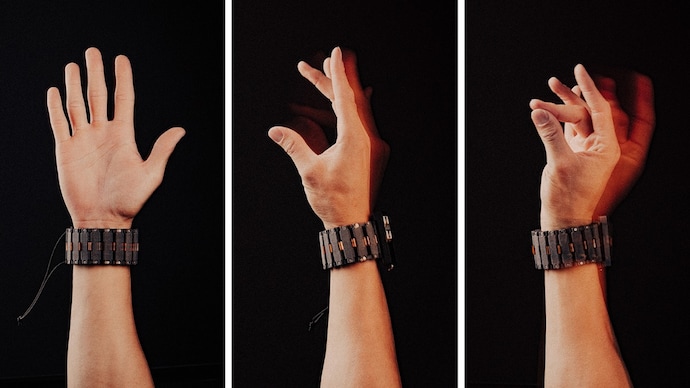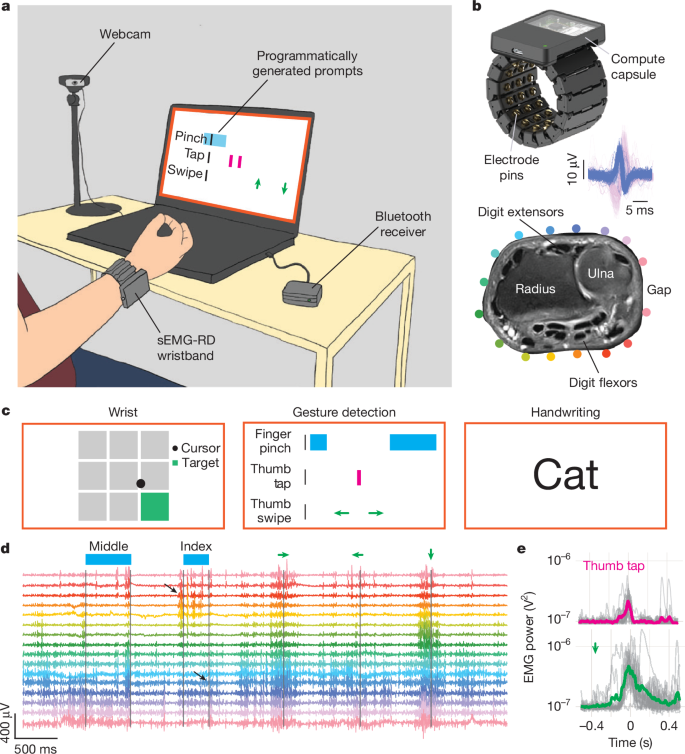Meta Launched Mind-Reading Wristband to Revolutionize Human-Computer Interaction
Meta launched mind-reading wristband technology that could completely change how people interact with digital devices. The experimental wearable, developed by Meta’s Reality Labs, is designed to translate your intention to move into a command on a screen. And it doesn’t require any actual physical movement. Just the thought of moving a finger or tapping can trigger an action, like opening an app, moving a cursor, or even typing on screen.
How Meta’s Mind-Reading Wristband Works
Meta launched a mind-reading wristband that could transform tech forever. Discover 5 powerful impacts this futuristic device may bring in 2025 The device works through a method called surface electromyography , where electrical signals from your brain travel down to your muscles even before they move. Sensors on the wristband pick up those tiny signals and AI software interprets them in real time. That means if you think about moving your thumb, even without moving it, the wristband knows what you’re about to do and carries out the command.

Meta’s researchers trained this technology using input from over 10,000 people. With all that data, the AI models powering the wristband can recognize the patterns of electrical signals linked to specific actions. And impressively, it works straight out of the box without the need to train or calibrate it for each new user.
Meta launched mind-reading wristband- This feature alone sets Meta’s invention apart from earlier gesture-control devices, which often required days of training to adapt to individual users. By solving the long-standing calibration issue, Meta’s device can offer a seamless and instant user experience.
Unlike some brain-interface technologies being explored elsewhere, Meta’s device is completely non-invasive. You don’t need surgery or implants. It looks like an oversized smartwatch, worn on the wrist. Just strap it on, and the system starts working based on your neural intentions.
Meta Launched Mind-Reading Wristband After Years of Neural Research
In practical terms, Meta launched mind-reading wristband allows users to navigate digital devices in an entirely new way. You can type by tracing letters in the air, click on apps using finger gestures, or scroll through content by slightly rotating your wrist. Some demonstrations have shown users controlling a mouse or typing short messages—just with small movements or intended ones. As users get used to the system, it becomes even more accurate, eventually responding to the activation of only a few muscle fibers, which means no visible motion is needed.

One of the key strengths of this system is how it opens up new possibilities for accessibility. At Carnegie Mellon University, researchers are already testing this wristband with patients who suffer from spinal cord injuries. Even those who have lost full control of their hands can still activate certain muscles, and this is enough for the wristband to translate their thoughts into digital actions. Also Read: LEGO Game Boy Model Building Set: 7 Powerful Reasons It’s the Ultimate Nostalgic Gift
This wristband is not just for lab testing or sci-fi fantasies. Meta aims to incorporate this technology into real-world consumer products. In fact, it has already paired the device with prototype smart glasses that allow users to take pictures, record videos, or perform tasks just with finger gestures. Combined with wearable AR, this could redefine how we interact with our phones, computers, or smart homes in the near future.
What makes the technology truly stand out is its immediacy. No extensive training, no calibration, no implant just wear and use. The device can detect intention milliseconds before your muscles actually move. For users, that translates into faster, more intuitive control. And for those with limited mobility, it could offer new independence.
While the wristband is still in development, Meta is targeting a potential commercial rollout in the coming years. If successful, this could be one of the most transformative consumer technologies since the touchscreen.
Conclusion
Meta launched mind-reading wristband technology that offers a sneak peek into a future where interaction is effortless and seamless. By detecting the intention to move and turning it into action, Meta’s device could redefine how humans interact with machines without ever touching a screen. The real question now is not if this tech will go mainstream, but how soon it will change everyday life.

